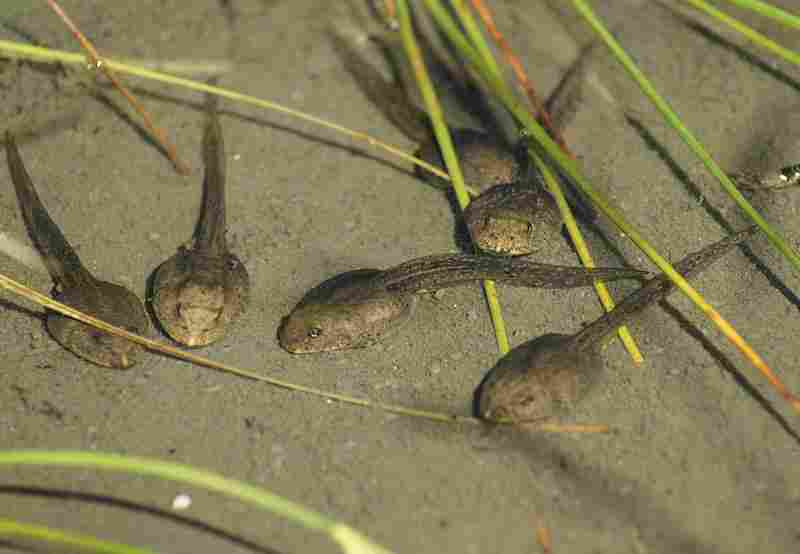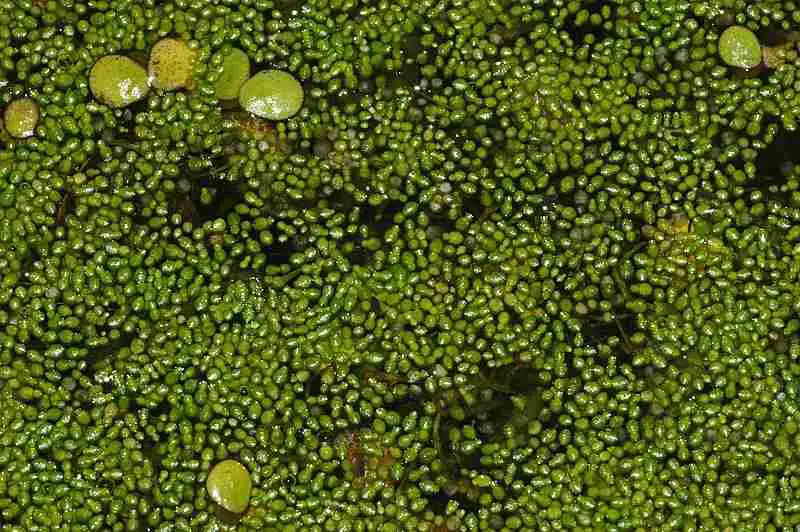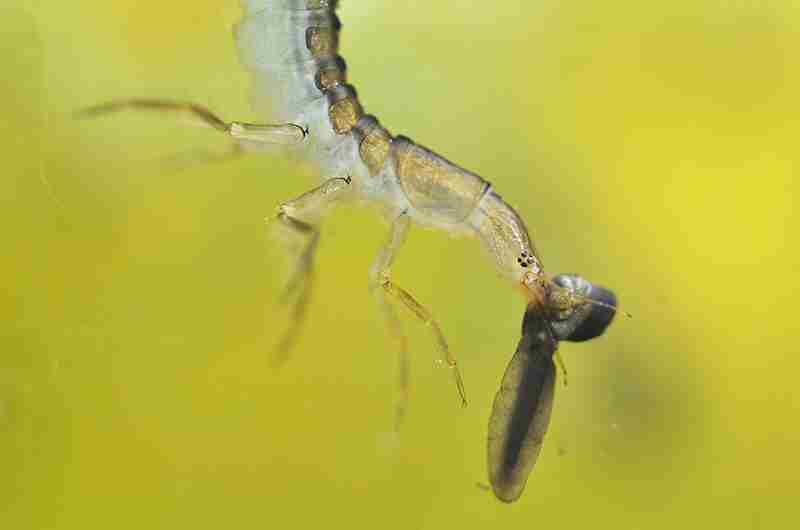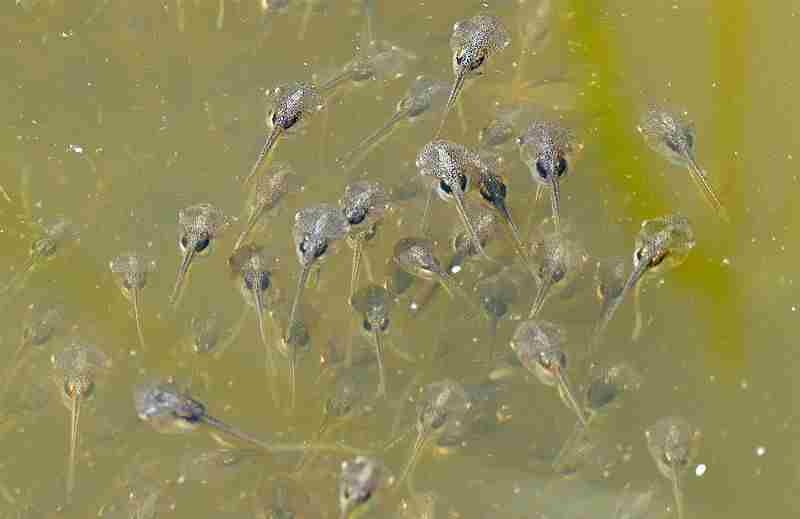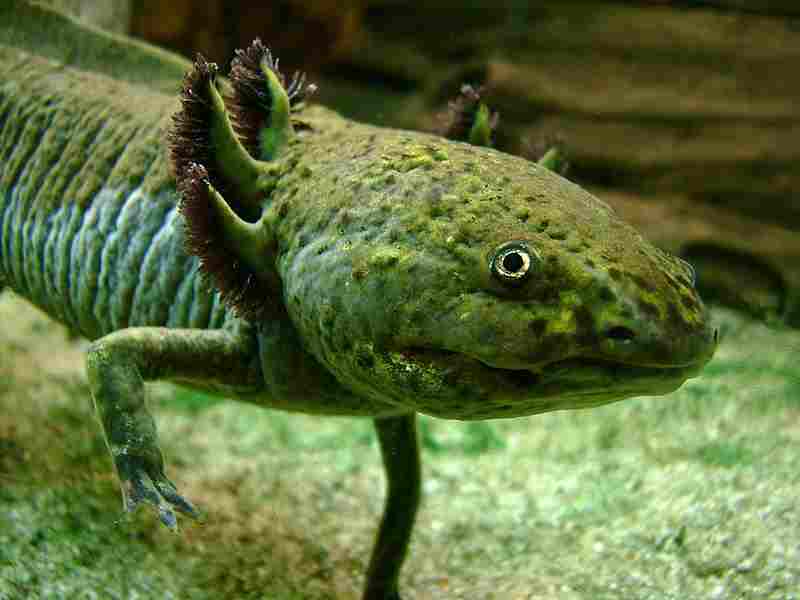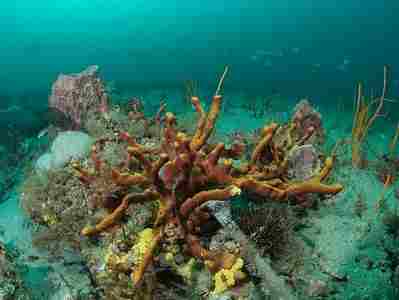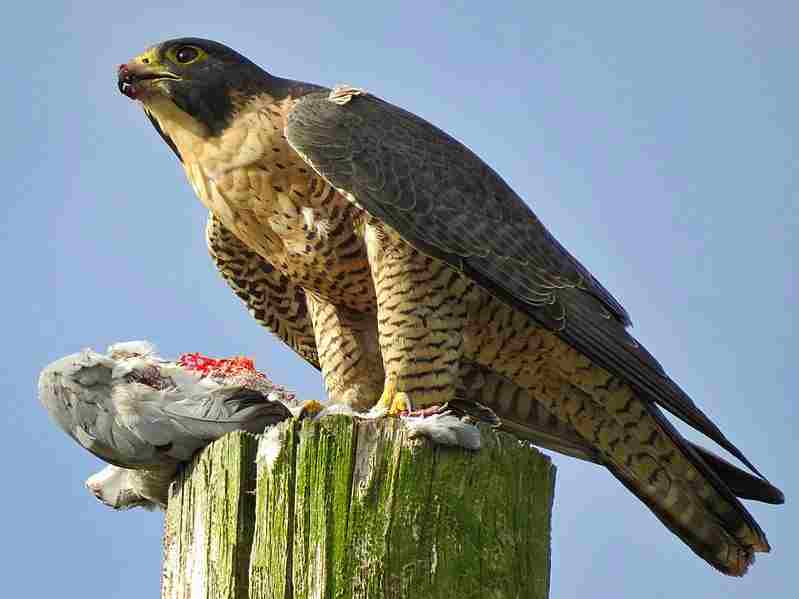Consumers in Freshwater Ecosystems and Their Characteristics
Consumers in freshwater ecosystems include primary consumers like tadpoles, secondary consumers like dragonfly nymphs, tertiary consumers like waterfowl, quaternary consumers like alligators, as well as detritivores and decomposers like amphipods and bacteria respectively.
This article discusses consumers in freshwater ecosystems and their characteristics, as follows;
1). Primary Consumers in Freshwater Ecosystems
Primary consumers in freshwater ecosystems are vital in terms of their contributions to the food web, serving as the second trophic level. They are herbivorous (and omnivorous) organisms that directly consume primary producers like; vascular and non vascular plants, chemosynthetic bacteria, and algae. The basic characteristics and food sources of freshwater primary consumers are discussed here.
Characteristics of Freshwater Primary Consumers
Characteristics of primary consumers in freshwater ecosystems include; herbivorous feeding habits, generally smaller size, and limited mobility. These attributes are outlined below;
Primary consumers in freshwater ecosystems are herbivorous, which implies that they feed mainly on plants or plant-like organic groups.
They are often smaller in size compared to apex predators and secondary consumers.
Several freshwater primary consumers, such as zooplankton, aquatic insects, and tadpoles, have limited mobility (relative to other consumers) and are adapted for life in the water.
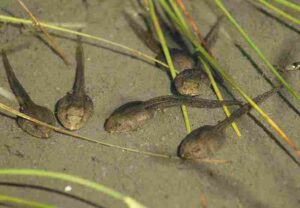
Food Sources for Freshwater Primary Consumers
Food sources for primary consumers in freshwater aquatic habitats include; plants like duckweed, and algae.
Primary consumers feed directly on primary producers, which include aquatic plants like water lilies, water lettuce, water hyacinths, watermeal, duckweed, bulrushes, and cattails. They also graze on algae that attach to rocky substrate, or float in the water column.
Microscopic primary consumers, such as zooplankton, survive mainly on algae. They filter these equally microscopic autotrophs from the water column, or scrape them off surfaces.
Some larger primary consumers, such as mbuna fish, common pleco, and turtles, feed on aquatic plants like duckweed. The bioenergy from these plants is transferred to these herbivorous consumers through feeding.
Examples of Primary Consumers in Freshwater Ecosystems
Examples of primary consumers in freshwater ecosystems are; zooplankton, tadpoles, macroscopic crustaceans like crayfish, and herbivorous fish like plecos.
Zooplankton, which include rotifers (Phylum Rotifera) and microscopic crustaceans, are important primary consumers in freshwater ecosystems. They consume algae and other small particles in the water.
Tadpoles represent the larval stage of amphibians like frogs and toads. They survive mainly by grazing on aquatic plants and algae.
Crayfish (which are in fact omnivorous/detritivorous crustaceans) are known to feed on plant material and algae, thereby functioning as primary consumers.
Some small fish species like mbunas and plecos are classified as primary consumers, because they mainly consume algae and aquatic plants.
*Additional Notes and Reiterations on Freshwater Primary Consumers
Primary consumers are foundational heterotrophs in the food chain of freshwater ecosystems. They are key in facilitating energy transfer from primary producers to organisms in higher trophic levels, including predators like the secondary consumers and beyond. This trophic configuration is behind the sustainability of the entire freshwater biome.
The primary consumers in freshwater ecosystems include animals such as zooplankton, aquatic insects, tadpoles, crayfish, and some herbivorous fish species. These organisms mainly feed on hydrophytes, algae, and other primary producers in the aquatic environment.
2). Secondary Consumers in Freshwater Ecosystems
Secondary consumers in freshwater ecosystems are the organisms that typically occupy the third trophic level of the aquatic food chain.
They mainly consume primary consumers or herbivores, and their role is very vital in regulating population dynamics and sustaining energy transfer within the ecosystem. Some of their basic characteristics and food sources are discussed in the following subsections;
Characteristics of Freshwater Secondary Consumers
Characteristics of freshwater secondary consumers include carnivorous feeding habits, high relative mobility and activity, and relatively-broad size range.
Secondary consumers are generally carnivores, meaning that they are dependent on biomass from other heterotrophs to survive. They prey on the primary consumers, or occasionally on vulnerable fellow secondary consumers.
Many secondary consumers are highly mobile, and actively hunt for their prey. They possess adaptations for pursuing and capturing organisms that serve as their food.
Also, secondary consumers can vary in size, from smaller organisms like arthropods and amphibians to larger ones like fish and reptiles.
Food Sources for Freshwater Secondary Consumers
The main food sources for secondary consumers in freshwater ecosystems, are primary consumers; which include various herbivorous organisms that in turn consume plants, algae, and other autotrophic producers within the ecosystem.
Predation is the mechanism by which freshwater secondary consumers acquire food resources. They actively hunt and prey on animals such as small herbivorous fish, tadpoles, aquatic insects, and crayfish, which are classified as primary consumers in freshwater habitats.
As earlier remarked, freshwater secondary consumers often exhibit predatory behaviors such as stalking, chasing, capturing, and feeding on prey organisms. They have adaptations like rapid locomotion, high sensitivity, sharp teeth, or specialized mouthparts which are utilized for this purpose.
Examples of Secondary Consumers in Freshwater Ecosystems
Examples of secondary consumers in freshwater ecosystems are; fish like trout, amphibians like frogs and salamanders, dragonfly nymphs, and some crustaceans. Below is an outline elaborating this list;
Most fish species in freshwater ecosystems are categorized as secondary consumers. These are medium-sized (and some large) species that feed on smaller organisms like zooplankton, insects, and smaller fish.
Amphibians like frogs and salamanders are secondary consumers that mainly feed on insects and smaller aquatic organisms.
A distinctive attribute of dragonflies is their predatory behavior, where they mainly feed on insects and tadpoles in their aquatic nymph stages.
Some crustaceans, like crabs and large crayfish, function as secondary consumers by feeding on smaller aquatic organisms.
Reptiles such as caimans are sometimes classified among secondary consumers. This is the case for freshwater ecosystems with immense species richness and diversity, so that there are higher consumers to occupy the tertiary (and quaternary) level.
*Additional Notes and Reiterations on Aquatic Secondary Consumers
Secondary consumers are instrumental in controlling the population of primary consumers and maintaining the equilibrium of resources in freshwater ecosystems. They are themselves preyed upon by the higher tertiary consumers, which occupy the overlying level in the aquatic food web/chain.
The secondary consumers in rivers include birds like dippers, white-clawed crayfish, crabs, and small fish like minnows.
Secondary consumers in saltwater environments are larger organisms such as sardines, herring, cod, tuna, and coral. Tertiary consumers in saltwater ecosystems include seals, dolphins, sharks, and other top predators.
3). Tertiary Consumers in Freshwater Ecosystems
Tertiary consumers in freshwater ecosystems are organisms that are placed within the fourth trophic level in the food chain.
They are generally carnivorous, but may also have omnivorous tendencies, and may prey on both secondary consumers and primary consumers.
Tertiary consumers are very important freshwater biotic components with regards to regulating population dynamics and fostering the continuous recycling of essential resources within these ecosystems. Some of their basic characteristics and food sources are highlighted here.
Characteristics of Freshwater Tertiary Consumers
Characteristics of freshwater tertiary consumers include; predominantly carnivorous tendencies, variable size, and occasional omnivorous feeding behavior.
Many freshwater tertiary consumers are carnivores and mainly feed on other animals. They are meat-eaters and have various adaptations for capturing and consuming prey.
Tertiary consumers in freshwater ecosystems can vary significantly in size, depending on the specific habitat, and their position in the trophic hierarchy.
While several tertiary consumers may be strict carnivores, others are omnivores, which means they are adaptable feeders that consume both plant material and animal biomass.
Food Sources for Freshwater Tertiary Consumers
The food sources for freshwater tertiary consumers are; secondary consumers and primary consumers.
Tertiary consumers prey on secondary consumers in the freshwater ecosystem. This means they feed on animals like frogs, fish, aquatic insects, and crustaceans.
In other cases, tertiary consumers may also consume primary consumers, depending on the composition and distribution of prey species in their habitat.
They exhibit predatory behaviors and possess adaptations that are effective for capturing and consuming their prey, which often include sharp teeth and other specialized structures.
Examples of Tertiary Consumers in Freshwater Ecosystems
Examples of tertiary consumers in freshwater ecosystems are; predatory fish, waterfowl, and caimans.
Some fish species, such as Atlantic salmon and largemouth bass, can be classified as tertiary consumers in rivers and lakes. They are known to prey on smaller fish, amphibians, and aquatic insects.
Waterfowl, including birds like coots and ducks that forage in freshwater ecosystems can also be classified as tertiary consumers, as they often feed on fish and other aquatic animals in ponds, lakes and rivers. Their physiological and behavioral features make them less vulnerable to predation in these aquatic environments.
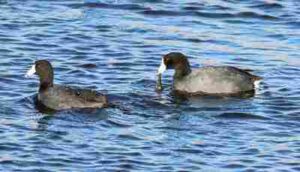
Freshwater otters are known for their carnivorous diet, which includes fish, amphibians and crustaceans.
In certain freshwater environments like the Amazon River, caimans serve as tertiary consumers by feeding on smaller animals within their territory.
Kingfishers are bird species that primarily consume fish from freshwater sources.
*Additional Notes and Reiterations On Freshwater Tertiary Consumers
Tertiary consumers are an essential component of the food web, which are involved in regulating the populations of secondary consumers as well as primary consumer populations. In some cases, they are themselves potential prey for larger and/or more advanced predators in the ecosystem.
Tertiary consumers in the river can include animals such as large fish, and birds like kingfishers, depending on the specific ecosystem and available prey species.
4). Quaternary Consumers in Freshwater Ecosystems
Quaternary consumers in freshwater ecosystems are a group of organisms that occupy the fifth trophic level in the food chain.
They are advanced predatory animals that feed on all consumers in lower trophic levels. These animals are often referred to apex predators in the ecosystem, which signifies that they have no natural enemies that prey on them within the ecosystem. Here, a discussion of their basic characteristics and food sources is provided.
Characteristics of Freshwater Quaternary Consumers
Characteristics of freshwater quaternary consumers include carnivorous behavior, apex predatory function, and relatively large size.
Quaternary consumers are usually carnivores, which may feed exclusively on other animals. They have specialized adaptations that help with capturing and consuming their prey.
They are usually the apex predators in the freshwater ecosystem, which indicates that they are at the highest trophic level and have no natural predators that operate within their habitat.
Quaternary consumers can vary in size, but most of them are significantly large in comparison to other consumers in the freshwater ecosystem.
Food Sources for Quaternary Consumers in Freshwater Ecosystems
Food sources for freshwater quaternary consumers are lower (primary, secondary and tertiary) consumers.
Quaternary consumers are able to prey on tertiary consumers, which are the organisms at the trophic level just below them, in the food chain. This implies that they feed on other predatory animals such as large fish, and water birds.
Their diet is composed of biomass from other animals, which makes them the ultimate predators within the freshwater ecosystem.
Examples of Quaternary Consumers in Freshwater Ecosystems
Examples of quaternary consumers in freshwater ecosystems are; large predatory fish, alligators, crocodiles, and some raptors.
Some large predatory fish, such as pike, large catfish, or muskellunge, can be considered quaternary consumers in freshwater ecosystems. They feed on smaller fish, amphibians, and, in some cases, even birds.
Alligators and crocodiles, depending on the geographic location, can function as quaternary consumers in freshwater systems, as they are at the top of the food chain.
Birds of prey such as ospreys and eagles that hunt for fish and other aquatic animals, are also quaternary consumers in aquatic ecosystems.
Additional Notes and Reiterations On Freshwater Quaternary Consumers
Generally, quaternary consumers are instrumental in maintaining the balance and health of freshwater ecosystems by controlling the populations of organisms that are positioned below them in the food chain.
These consumers are essential for controlling the size, distribution, and adaptive characteristics of prey populations; and influencing the structure of the entire aquatic ecosystem.
Quaternary consumers in a lake can include large predatory fish, birds of prey, and potentially, depending on the geographic region, reptilian predators like alligators or crocodiles, which are at the apex of the food chain.
5). Detritivores and Decomposers in Freshwater Ecoststems
In freshwater ecosystems, detritivores and decomposers are two vital organic groups involved in recycling essential nutrients and breaking down organic materials.
These organisms are important for maintaining the equilibrium of freshwater ecosystems, by converting organic waste and remains into forms that can be utilized by other organisms. More information their basic attributes and food sources is provided as follows;
Attributes and Food Sources for Freshwater Detritivores
Detritivores are organisms that mainly feed on detritus, which comprises of partially-decomposed, granular organic matter from various sources such as dead plants, animals, and fecal material.
The detritivores are vital as biotic instruments in breaking down complex organic materials into simpler substances.
Detritivores consume a variety of organic materials, that range from algal biomass to hydrophytic leaf-litter, carcasses, and biogenic debris. They actively ingest and digest such detrital materials internally.
Examples of common detritivores in freshwater ecosystems include aquatic worms, snails, isopods, amphipods, as well as others like dung flies, millipedes, springtails, and slugs. Some aquatic detritivores are adapted to life in aquatic environments, while others are terrestrial and dominate the sedimentary zones like river margins and swamps.
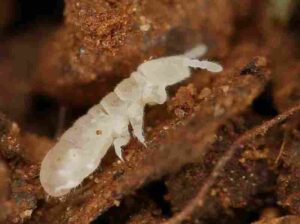
Characteristics and Food Sources of Freshwater Decomposers
Decomposers are mostly microorganisms, such as bacteria and fungi, that are able to break down complex organic materials into simpler compounds through a series of biochemical processes (collectively referred to as biodegradation).
They are fundamental in their contribution to the decomposition of organic material, which also facilitates the release of nutrients back into the abiotic resource-stream of the ecosystem..
Food sources for freshwater decomposers mainly include organic matter, such as the remains of dead organisms. They transform the complex organic molecules in such biogenic matter, into usable nutrients like nitrogen, sulfur and phosphorus.
Most freshwater decomposers, such as bacteria and fungi, can be found in the bottom sediments of rivers, ponds and lakes. They tend to thrive in environments that support the accumulation of organic matter, which provides a continuous source of food.
Bacteria and fungi are the main decomposers in freshwater habitats. In addition to these microorganisms, many detritivorous arthropods in freshwater marshes, which help with decomposition, are instrumental in breaking down organic wastes.
*Additional Notes on Detritivores and Decomposers in Freshwater Ecosystem
Detritivores in the freshwater ecosystem include organisms like aquatic worms, slugs, snails, amphipods, and isopods.
Decomposers in freshwater are mainly microbes like bacteria and fungi, which are found in the sediments of rivers, streams, swamps, ponds and lakes.
Detritivores in lakes can include a range of organisms, from crustaceans like amphipods to annelids like tubificid aquatic worms.
Decomposers in freshwater marshes primarily consist of bacteria and fungi, whose activities are supported by various detritivorous arthropods that assist in decomposition processes.
*Omnivory and Adaptability Among Freshwater Consumers
Omnivory is a feeding strategy or scenario where an organism has the ability to consume both animal and plant-based food materials.
This trait is observed among various freshwater consumers, and it provides them with a significant biological advantage in adapting to different trends of food availability and environmental conditions. The basic characteristics and food sources of omnivorous freshwater consumers are outlined in this section, which addresses them as a distinct group.
Characteristics of Omnivores in Freshwater Ecosystems
Characteristics of freshwater omnivores include; versatile diet, broad adaptability, and varied morphological features.
Omnivorous freshwater consumers have a versatile diet, which means they can consume diverse kinds of animal and plant material. This adaptability in their feeding behavior enables them to exploit a wide range of food sources.
Omnivores can adapt to varying environmental conditions as well as seasonal and circumstantial changes in food availability. Their ability to switch between different food sources makes them highly flexible and adaptable as consumers.
These consumers often possess specialized mouthparts and digestive systems, that enable them to efficiently process both plant and animal material.
Food Sources for Freshwater Omnivores
For freshwater omnivores, food sources include; plants, algae, invertebrates, small fish, and partially-decomposed organic matter.
Omnivorous freshwater consumers can feed on aquatic plants, algae, and other forms of autotrophic biomass. They graze on vegetative matter found in freshwater habitats.
These organisms also consume invertebrates such as small arthropods, worms, and aquatic mollusks. Some omnivorous species in high trophic levels may prey on larger consumers like fish.
Omnivores can consume decaying organic matter, thereby contributing to the cycling of nutrients in freshwater ecosystems. In addition to actively foraging or hunting, they may also scavenge for carrion or detrital matter.
Examples of Freshwater Omnivores
Examples of freshwater omnivores include; common carp, crayfish, ducks, geese, river otters, and even terrestrial animals like racoons. These omnivores may take various positions in the trophic hierarchy of the ecosystem. They are each briefly highlighted below;
Common carp are omnivorous fish that feed on a broad range of food materials; including plants, algae, small invertebrates, and detrital matter.
Freshwater crayfish are known omnivores. They feed on hydrophytic biomass, algae, smaller aquatic invertebrates, and carrion.
Waterfowl such as ducks and geese are omnivorous birds that consume materials from aquatic plants, various invertebrates, and even small fish.
River otters are known to be opportunistic feeders, which consume fish, crayfish, and occasionally aquatic plants.
While they are primary terrestrial dwellers, raccoons that inhabit areas close to freshwater bodies may consume aquatic plant matter, as well as small fish, and invertebrates.
*Additional Notes On Freshwater Omnivores
Freshwater omnivores can include species like common carp, crayfish, ducks, and river otters.
Freshwater dolphins are primarily carnivorous and do not fit the omnivorous category.
The pacu is primarily classified as an omnivorous fish because it consumes both plant material (aquatic vegetation) and small invertebrates, or fish on occasion.
*Importance and Functions/Roles of Consumers in Freshwater Ecosystems
Consumers, which that feed on other living organisms or animal-derived organic material, have vital functions in freshwater ecosystems. Their presence and activities contribute to the health, stability, and functioning of these environments in numerous ways.
Factors that define the importance and roles of consumers in freshwater ecosystems include; population regulation, predation, herbivory, nutrient cycling, energy transfer, species interactions, control of invasive organisms, water quality maintenance, disease regulation, ecosystem resilience, cascading effects, and support of human livelihood. These are outlined elaborately below;
Predatory consumers are known to control the populations of their prey species. This helps prevent problems like overgrazing and overpopulation or overgrowth of particular species, and maintains the balance of resources in the ecosystem.
Herbivores control plant populations, which reflects directly on the composition and total biomass of aquatic vegetation. This usually has a cascading effect on other species, such as fish and invertebrates that use such vegetation as microhabitat, or feed on plant-dependent organisms.
Detritivores, which include insects, worms, and crustaceans, help to degrade dead plant and animal biomass into smaller particles. This decomposition process/mechanism releases nutrients from the substrates back into the ecosystem, so that they become available for uptake by primary producers.
Consumers are very essential in transferring energy from one trophic level of the freshwater food chain or energy pyramid, to another. Primary consumers (herbivores) feed on primary producers (plants and algae), while secondary consumers feed on primary consumers, and so forth.
This state of continuous energy flow allows for the efficient utilization and conservation of available resources, thereby sustaining a diverse food web.
The interactions between consumers and their food sources result in complex relationships, such as competition, mutualism and predation. These interactions contribute to the overall biodiversity and complexity of the ecosystem.
Some consumers prey on invasive species, thereby helping to regulate their populations. This is a critical measure in preventing non-native species from outcompeting native ones and disrupting the equilibrium of the freshwater ecosystem.
Filter-feeding consumers, including mussels alongside some species of fish, help to maintain water quality by removing some phytoplankton and suspended particles. This function contributes to clearer and more productive freshwater systems.
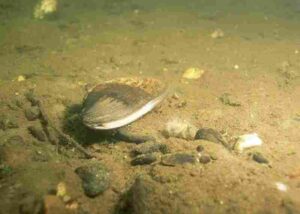
Some consumers, especially those that feed on invertebrates, help to control populations of disease vectors. By reducing the number of these vectors, they indirectly protect the health of both human and animal populations.
Consumers are instrumental in maintaining ecosystem resilience. Their presence as well as interactions, contribute to the ability of ecosystems to adapt to changes and disturbances, thereby ensuring long-term stability.
The presence or absence of consumers in freshwater habitats, can trigger cascading effects throughout the trophic hierarchy. Changes in consumer populations can lead to changes in primary producers and other members of the organic community.
Lastly, many freshwater ecosystems are essential for fisheries, tourism, and recreation. Consumers such as fish may provide a valuable food source as well as economic benefits for local communities.
Conclusion
Consumers in freshwater are;
1. Primary Consumers
2. Secondary Consumers
3. Tertiary Consumers
4. Quaternary Consumers
5. Detritivorous Consumers
6. Decomposers
